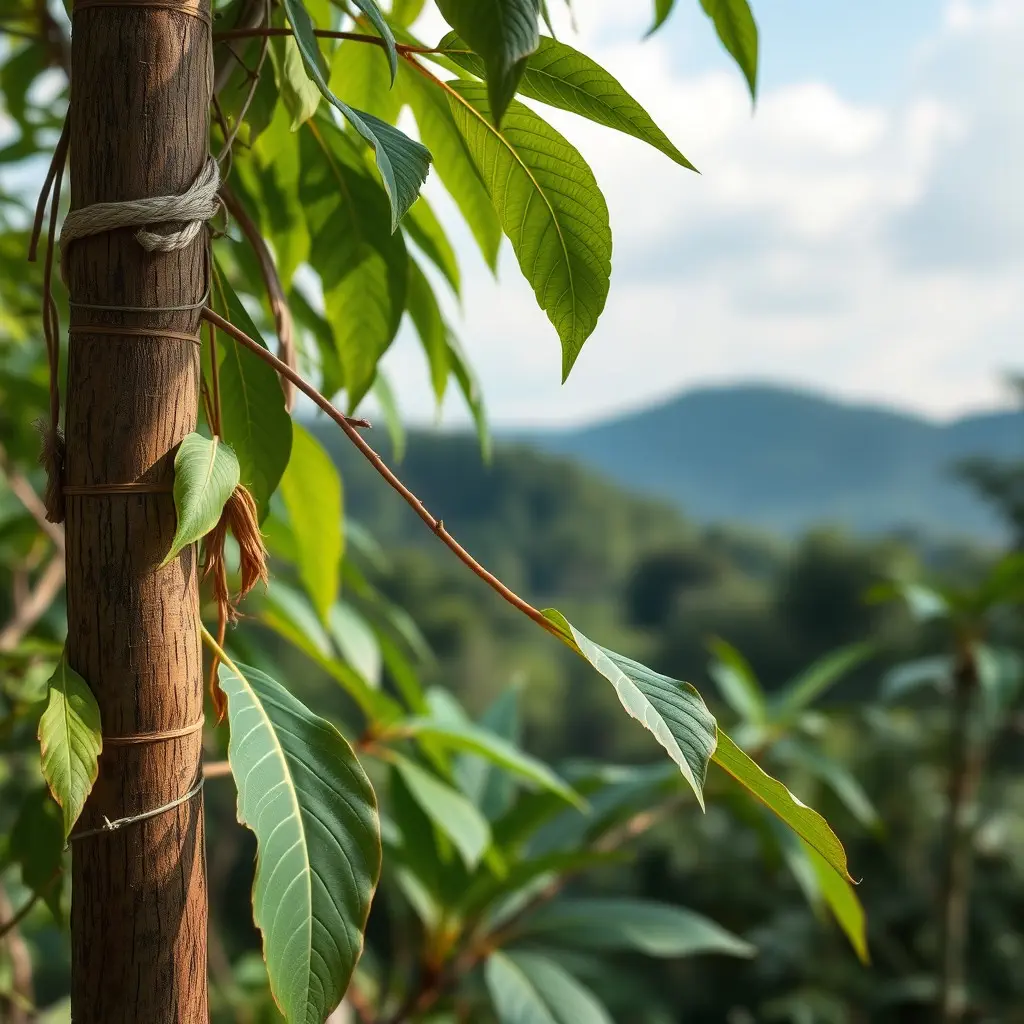Malaysian Kratom, derived from the Mitragyna speciosa tree, has gained attention as a potential natural remedy for managing opioid withdrawal symptoms. Its active compounds, mitragynine and 7-hydroxymitragynine, may interact with opioid receptors to alleviate these symptoms, serving as an alternative to traditional pharmaceutical interventions. While Kratom shows promise in aiding recovery from opioid addiction, it's crucial for individuals to consult healthcare professionals before using it due to safety, efficacy, and dosing considerations that are subject to regulatory oversight. The scientific community is actively researching Kratom's mechanisms of action and its potential therapeutic benefits, with a focus on clinical trials. However, the legal status of Kratom varies by jurisdiction, with some regions imposing strict controls due to its psychoactive nature and potential for abuse, necessitating informed adherence to local laws. Users are advised to stay updated on legislative changes to ensure compliance and safe usage if it is legally accessible in their area. Personalized medical guidance is recommended for anyone considering Kratom as part of their opioid withdrawal treatment plan, due to the significant variability in individual responses to it.
explore the potential of Malaysian Kratom as a natural intervention for managing opioid withdrawal symptoms, delving into its mitragynine content and scientific basis for alleviating the distressing effects of detoxification. This article not only sheds light on the therapeutic properties of this tropical leaf but also navigates the complex legal framework surrounding its use. Understanding the nuances of Malaysian Kratom’s role in withdrawal management is crucial for those seeking safe and effective relief from opioid addiction.
- Understanding Opioid Withdrawal and the Role of Malaysian Kratom
- The Science Behind Malaysian Kratom's Mitragynine and Its Effects on Opioid Withdrawal Symptoms
- Navigating the Legal Landscape and Safe Use of Malaysian Kratom for Withdrawal Management
Understanding Opioid Withdrawal and the Role of Malaysian Kratom

Opioid withdrawal is a medically manageable condition but one that can be incredibly challenging for individuals attempting to recover from opioid addiction. The syndrome manifests through a range of symptoms including intense cravings, anxiety, muscle aches, insomnia, and gastrointestinal issues, among others. Understanding the nature of these withdrawal symptoms is crucial for developing effective treatment strategies that can alleviate discomfort and support recovery efforts.
In this context, Malaysian Kratom has garnered attention as a potential natural aid in managing opioid withdrawal symptoms. Originating from the Mitragyna speciosa tree native to Southeast Asia, Kratom has been traditionally used by local populations for its stimulant and sedative properties. Scientific research suggests that certain compounds found in Malaysian Kratom leaves, particularly mitragynine and 7-hydroxymitragynine, can interact with opioid receptors in the brain and produce effects similar to those of opioids, which may help in reducing withdrawal symptoms. As a result, Malaysian Kratom is being explored as a safer alternative to traditional pharmaceutical treatments for opioid withdrawal, offering hope for individuals seeking to mitigate the discomfort associated with this condition. However, it is important for individuals considering the use of Kratom to consult healthcare professionals, as the safety, efficacy, and appropriate dosing of Kratom can vary widely and are subject to regulatory oversight.
The Science Behind Malaysian Kratom's Mitragynine and Its Effects on Opioid Withdrawal Symptoms

Malaysian Kratom, a plant native to Southeast Asia, has garnered attention for its potential role in mitigating opioid withdrawal symptoms. The primary active ingredient in Kratom is mitragynine, an alkaloid that interacts with the body’s opioid receptors. Research suggests that mitragynine’s effects are akin to those of opioids but without the same level of sedation or respiratory depression, making it a potential tool for managing withdrawal. Clinical studies indicate that Kratom may alleviate the discomfort associated with opioid cessation by providing relief from anxiety, muscle aches, and other flu-like symptoms commonly experienced during detoxification. The precise mechanisms behind mitragynine’s action are under investigation; however, its agonistic effects on mu-opioid receptors are believed to play a significant role in its therapeutic potential. Additionally, the alkaloid appears to modulate dopamine and serotonin levels, which could contribute to its analgesic properties and overall well-being of individuals undergoing withdrawal from opioids. As research continues, the scientific community is keen to explore how Malaysian Kratom can be harnessed to support individuals in recovery from opioid addiction, emphasizing the importance of further clinical trials to fully understand its efficacy and safety profile.
Navigating the Legal Landscape and Safe Use of Malaysian Kratom for Withdrawal Management

Navigating the legal landscape of Kratom is a complex issue, as its status varies by jurisdiction. In some regions, Malaysian Kratom, derived from the Mitragyna speciosa tree native to Southeast Asia, is regulated or restricted due to its psychotropic effects and potential for abuse. Users seeking relief from opioid withdrawal symptoms must first understand their local laws to ensure compliance with regulations. The legality of Kratom is subject to change as new research emerges, highlighting the importance of staying informed about current legislation.
For those within regions where Malaysian Kratom is legally available and deemed safe for use, it is crucial to approach its consumption responsibly. Safe use involves adhering to recommended dosages, avoiding combination with other substances, and consulting healthcare professionals. The alkaloids present in Kratom, such as mitragynine and 7-hydroxymitragynine, are believed to offer relief from withdrawal symptoms associated with opioid cessation. Proper dosing is key to managing these symptoms effectively and mitigating potential risks. It is also important to note that individual responses to Kratom can vary, making personalized guidance from a qualified medical provider invaluable for those attempting to use Malaysian Kratom as part of their withdrawal management strategy.
Malaysian Kratom has emerged as a potential natural aid in managing opioid withdrawal symptoms, offering hope to many seeking relief from the harrowing experience. The scientific community has shed light on the mechanisms of mitragynine, the primary active component in Kratom, which contributes to its promising effects in alleviating withdrawal symptoms. As the legal status of Kratom continues to be a subject of debate and regulation across jurisdictions, it is crucial for individuals to approach its use with caution and under professional guidance. The discussion surrounding this plant-based alternative underscores the ongoing need for research to fully understand its potential benefits and risks. As such, Malaysian Kratom represents a compelling subject for further investigation and careful consideration within the context of public health policy and treatment options for opioid withdrawal.






